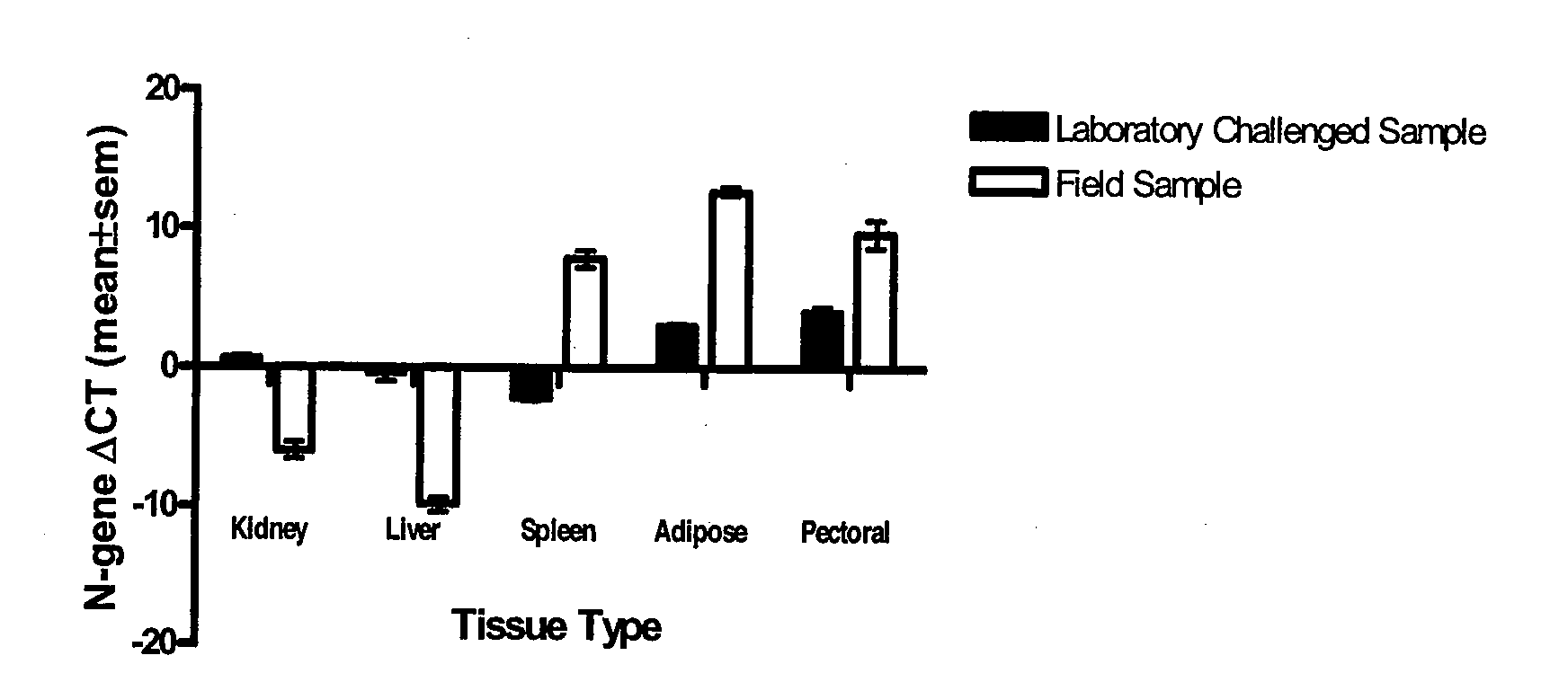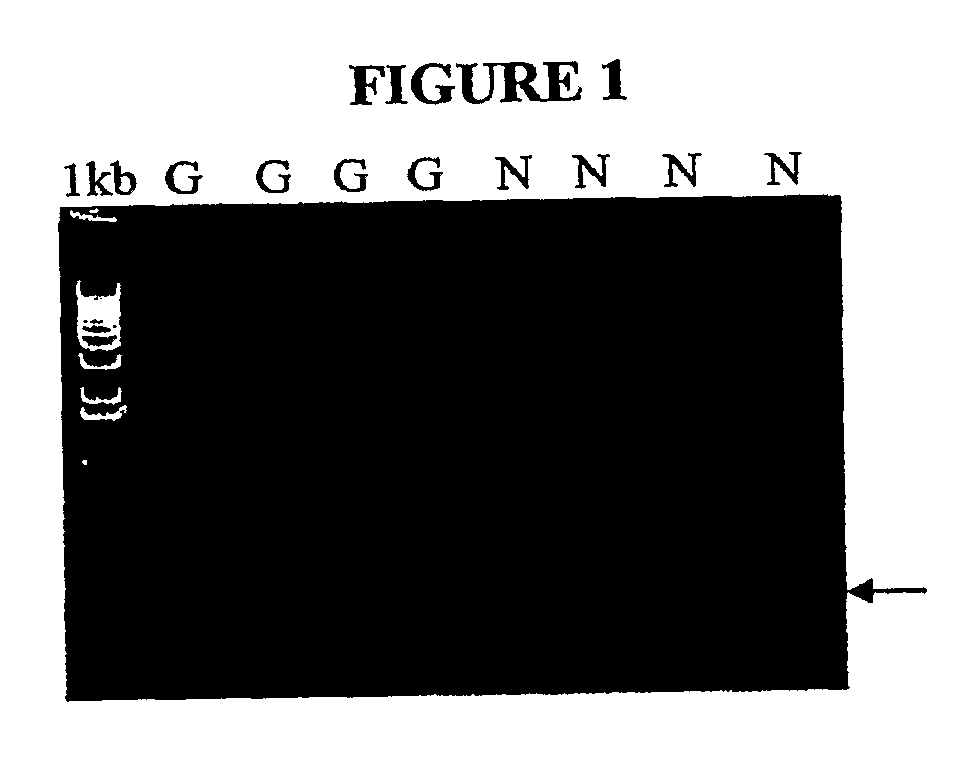Non-invasive detection of fish viruses by real-time PCR
a technology of real-time pcr and fish viruses, applied in the field of non-invasive detection of fish viruses by real-time pcr, can solve the problems of salmon farming being virtually destroyed, disease outbreaks often pose major challenges for sustainable development, and viral diseases are major obstacles to salmon farming
- Summary
- Abstract
- Description
- Claims
- Application Information
AI Technical Summary
Problems solved by technology
Method used
Image
Examples
example 1
[0024]Primer Optimization for Real-Time RT-PCR
[0025]Primers for IHNV N- and G-genes were designed based on the sequence of IHNV reference strain WRAC, GenBank accession number L40883 (Table 1). Total RNA was isolated from IHNV-infected EPC (Epithelioma papillosum cyprinid) cell culture, and cDNA synthesized using MultiScribe reverse transcriptase (PE Applied Biosystems). Two sets of N- and G-gene primers (Table 1) were screened using three combinations (50, 300 and 900 nM) of the forward and reverse primers. The N- and G-gene primer sequences chosen were conserved across different isolates of IHNV. The N-gene primer combination (N737F and N843R) and the G-gene primer combination (G1035 and G1 147R) provided the lowest cycle threshold (Ct) values and the optimal primer concentration was 300 nM of each both forward and reverse primers. The melting curves for both the N- and G-gene amplicons showed a single peak at their expected melting temperatures. Neither the N- nor G-gene primers ...
example 2
[0026]Detection of IHNV in different tissue samples from laboratory-challenged and naturally infected trout samples
[0027]The IHNV N- and G-genes were detected in kidney, liver, spleen, adipose tissue, and pectoral fins of both laboratory-challenged and naturally infected trout. The amplification profiles and the dissociation curves of N-and G-gene amplicons in all five different tissues are shown in FIG. 2. The melting curves of both N- and G-gene amplicons showed a single peak at 85.5° C. and 86.5° C., respectively, indicating the specificity of the PCR products. The relative expression of the N- and G-genes in different tissues of laboratory- challenged and naturally infected trout sample is shown in FIG. 3. In general, liver, kidney, and spleen tissues had a higher level of expression (therefore lower ΔCt value) compared to adipose tissues and pectoral fins for both N- and the G-genes in laboratory-challenged and naturally infected trout. However, there were noticeable difference...
example 3
[0029]Optimization of real-time RT-PCR conditions using primers based on structural (glycoprotein, G and nucleocapsid, N) and non-structural (RNA-dependent-RNA polymerase, L) genes of IHNV.
[0030]The initial optimizations of the real-time RT-PCR conditions were performed using total RNA derived from IHNV-infected EPC (Epithelioma papulosum cyprinid) cell line. EPC cells were inoculated with IHNV using a virus inoculum at 2.5×107 pfu / mL (IHNV Strain 220.90) and following a published protocol (LaPatra et al. 1994). Virus inoculated and control cell cultures were maintained at 17° C. in minimum essential medium supplemented with 2% fetal bovine serum. Four days post-inoculation, control and virus-inoculated cells were harvested and 500 μL TRI Reagent™ (Molecular Research Center, Inc., Ohio) were added before storing the cells at −80° C.
[0031]Total RNA was isolated from control and IHNV-infected EPC cells following the TRI Reagent RNA isolation protocol. The RNA pellets were dissolved in...
PUM
| Property | Measurement | Unit |
|---|---|---|
| Temperature | aaaaa | aaaaa |
| Temperature | aaaaa | aaaaa |
| Molar density | aaaaa | aaaaa |
Abstract
Description
Claims
Application Information
 Login to View More
Login to View More - R&D
- Intellectual Property
- Life Sciences
- Materials
- Tech Scout
- Unparalleled Data Quality
- Higher Quality Content
- 60% Fewer Hallucinations
Browse by: Latest US Patents, China's latest patents, Technical Efficacy Thesaurus, Application Domain, Technology Topic, Popular Technical Reports.
© 2025 PatSnap. All rights reserved.Legal|Privacy policy|Modern Slavery Act Transparency Statement|Sitemap|About US| Contact US: help@patsnap.com



